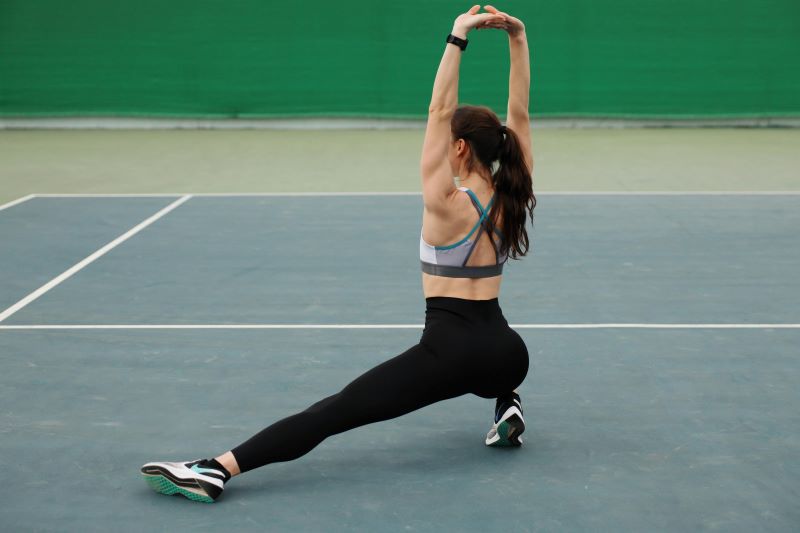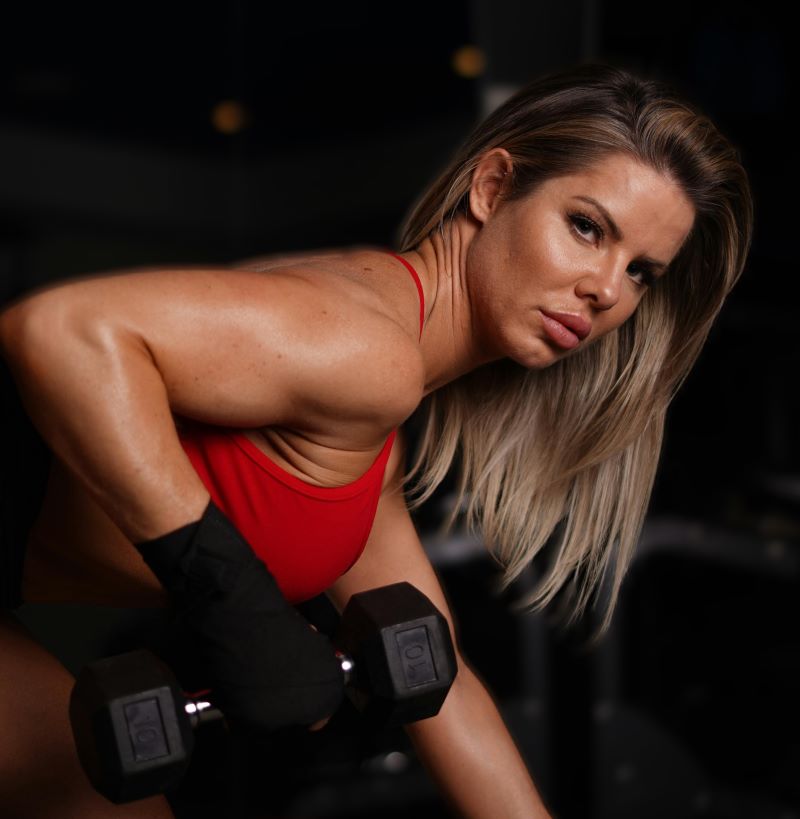When it comes to choosing top exercise routines, understanding the different types available can help you select one that best aligns with your fitness goals. Each type of exercise routine offers unique benefits and caters to different aspects of physical health.
Strength Training
Strength training routines focus on building muscle mass and improving strength. These workouts often involve exercises such as weight lifting, bodyweight exercises (like push-ups and squats), and resistance band exercises. Strength training is crucial for increasing muscle tone, boosting metabolism, and enhancing overall strength.
Cardiovascular Workouts
Cardiovascular or cardio routines aim to improve heart health and endurance. Activities such as running, cycling, swimming, and brisk walking fall into this category. Cardio exercises are effective for burning calories, improving cardiovascular health, and increasing stamina.
Flexibility and Stretching
Flexibility routines, including activities like stretching, yoga, and Pilates, focus on increasing the range of motion and reducing muscle tension. These routines are essential for improving flexibility, preventing injuries, and enhancing overall physical performance.
High-Intensity Interval Training (HIIT)
HIIT workouts involve alternating between short bursts of intense activity and periods of lower intensity or rest. This type of routine is highly effective for burning fat, improving cardiovascular health, and building endurance in a shorter amount of time.
Yoga and Pilates
Yoga and Pilates routines emphasize core strength, balance, and overall body awareness. Yoga incorporates breathing exercises and poses to improve flexibility and mental well-being, while Pilates focuses on core stability and posture.
Each type of exercise routine offers distinct benefits, so it’s important to choose one based on your individual fitness goals, whether you’re aiming for muscle gain, weight loss, improved cardiovascular health, or increased flexibility.
Table of Contents
Goals and Benefits
Choosing the right exercise routine depends largely on your personal fitness goals. Different types of exercise routines offer various benefits, and understanding these can help you align your workouts with your desired outcomes.
Weight Loss
For those focused on weight loss, high-intensity routines like HIIT and cardio workouts are highly effective. HIIT workouts boost metabolism and burn calories efficiently, while cardio exercises help create a calorie deficit. Strength training also supports weight loss by increasing muscle mass, which in turn raises your resting metabolic rate.
Muscle Gain
Strength training routines are ideal for muscle gain. Incorporating weight lifting, resistance exercises, and bodyweight workouts can help build and tone muscles. Progressive overload, where you gradually increase the weights or resistance, is key to stimulating muscle growth.
Improved Cardiovascular Health
Cardiovascular routines, including running, cycling, and swimming, are designed to enhance heart health and endurance. Regular cardio exercise strengthens the heart, improves blood circulation, and can lower the risk of heart disease.
Increased Flexibility
Flexibility and stretching routines, such as yoga and Pilates, improve your range of motion and reduce muscle stiffness. These exercises enhance overall flexibility, which can improve your performance in other workouts and reduce the risk of injuries.
Stress Reduction
Exercise routines like yoga and Pilates are known for their stress-relieving benefits. These routines incorporate breathing techniques and mindfulness practices that help lower stress levels and improve mental well-being.
Each exercise routine offers unique advantages tailored to specific fitness goals. By choosing the right routine based on what you want to achieve, you can maximize the benefits and see more effective results.

Intensity Levels
Understanding the different intensity levels of exercise routines is crucial for tailoring your workouts to meet your fitness goals and ensuring that you get the most out of your exercise regimen. Intensity levels can greatly influence the effectiveness of your workout and your overall progress.
Low-Intensity Routines
Low-intensity exercises are characterized by moderate effort and are usually easier on the body. Activities such as walking, light stretching, and gentle yoga fall into this category. These routines are ideal for beginners, those recovering from injury, or individuals who prefer less strenuous workouts. They help improve general fitness and can be done more frequently without excessive fatigue.
Moderate-Intensity Routines
Moderate-intensity workouts involve a higher level of effort and include activities such as brisk walking, moderate jogging, or cycling at a steady pace. These routines provide a balanced approach to improving cardiovascular health and endurance. They are suitable for individuals who have a basic level of fitness and are looking to build stamina and overall strength.
High-Intensity Routines
High-intensity routines, such as High-Intensity Interval Training (HIIT) and intense weight lifting, involve short bursts of intense activity followed by periods of rest or lower intensity. These workouts are designed to push your body to its limits and are effective for burning calories, improving cardiovascular fitness, and building muscle. Due to their demanding nature, high-intensity workouts are best suited for individuals with a higher fitness level or those who are looking for a challenge.
Choosing the right intensity level depends on your current fitness level, goals, and preferences. Incorporating a mix of different intensities into your routine can help prevent plateaus and keep your workouts engaging and effective.
Duration and Frequency
When planning an effective exercise routine, understanding the duration and frequency of workouts is key to achieving your fitness goals. These factors can influence how quickly you see results and how sustainable your routine is over time.
Short-Term Routines (15-30 Minutes)
Short-term routines are ideal for individuals with limited time or those just starting their fitness journey. These workouts, which may include quick HIIT sessions or brisk walks, can be highly effective when performed consistently. Short-term routines are also easier to fit into busy schedules and can provide significant health benefits when done regularly.
Medium-Term Routines (30-60 Minutes)
Medium-term routines are commonly recommended for those looking to improve overall fitness. This duration allows for a more comprehensive workout, including a combination of cardio, strength training, and flexibility exercises. Medium-term routines strike a balance between efficiency and effectiveness, making them suitable for most fitness enthusiasts who can commit to a regular schedule.
Long-Term Routines (60+ Minutes)
Long-term routines, such as extended gym sessions or long-distance runs, are typically reserved for advanced fitness levels or specific training goals. These workouts provide ample time to target multiple areas, such as endurance, strength, and flexibility, and are often used by athletes or dedicated fitness enthusiasts. However, it’s important to balance long-term routines with proper rest and recovery to avoid overtraining.
Frequency
The frequency of workouts should align with your goals and fitness level. For general health, 3 to 5 days of exercise per week is recommended. For specific goals like muscle gain or weight loss, more frequent sessions may be beneficial. It’s also crucial to include rest days to allow your body to recover and prevent injuries.
Balancing duration and frequency in your exercise routine helps ensure that you stay motivated and continue to make progress towards your fitness goals.
Equipment Requirements
The type and amount of equipment needed can significantly impact the effectiveness and convenience of your exercise routine. Understanding different equipment requirements helps you choose a workout plan that aligns with your preferences and resources.
Bodyweight Exercises
Bodyweight exercises require no equipment and use your own body weight as resistance. These routines are versatile and can be performed anywhere, making them ideal for home workouts or when traveling. Examples include push-ups, squats, lunges, and planks. Bodyweight exercises are effective for building strength, improving flexibility, and enhancing overall fitness.
Minimal Equipment
Minimal equipment routines use basic tools that can be easily incorporated into a home workout setup. Common items include dumbbells, resistance bands, kettlebells, and a yoga mat. These tools are relatively inexpensive and versatile, allowing you to perform a wide range of exercises, such as resistance training, functional movements, and flexibility work.
Full Equipment
Full equipment routines involve using gym machines, free weights, and specialized gear. These routines are typically performed in a gym setting and can include exercises like machine-based strength training, treadmill running, and rowing. Full equipment routines provide access to a broader range of exercises and can be particularly beneficial for targeting specific muscle groups and achieving advanced fitness goals.
Choosing the right equipment depends on your fitness goals, space availability, and budget. While bodyweight and minimal equipment workouts are accessible and convenient, full equipment routines offer a broader range of exercises and more targeted training options.
Target Audience
Selecting the appropriate exercise routine depends on various factors, including your fitness level, goals, and experience. Understanding the different needs of target audiences can help you choose or design a routine that is effective and sustainable.
Beginners
For those new to exercise, it’s important to start with routines that are manageable and help build a foundation of fitness. Beginners should focus on low to moderate-intensity workouts that include basic movements and gradually introduce strength training and cardio. Simple bodyweight exercises, light cardio, and beginner-friendly yoga or stretching routines are ideal for building confidence and improving overall fitness.
Intermediate Exercisers
Intermediate exercisers have a basic level of fitness and can handle more challenging routines. They may benefit from incorporating a mix of moderate to high-intensity workouts, such as intermediate HIIT sessions, more complex strength training routines, and varied cardio exercises. At this level, individuals should focus on building endurance, increasing strength, and fine-tuning their techniques.
Advanced Athletes
Advanced athletes require high-intensity, specialized routines to push their limits and achieve specific performance goals. These routines often involve advanced strength training, high-intensity interval training, and complex cardio workouts. Advanced routines may also include sport-specific training, high-volume workouts, and periodization plans to optimize performance and prevent plateaus.
Choosing a routine based on your fitness level ensures that you are working out safely and effectively. Tailoring your exercise program to your specific needs helps you achieve your goals more efficiently and reduces the risk of injury.
Customization and Personalization
Customizing and personalizing your exercise routine can greatly enhance its effectiveness and ensure it aligns with your specific goals and preferences. Tailoring your workouts helps address individual needs and can lead to better results and higher motivation.
Standard Routines
Standard routines are pre-designed programs that offer a structured approach to exercise. These routines are typically effective for general fitness and are often used by beginners or those seeking a straightforward plan. Examples include generic workout plans available online or in fitness apps. While they provide a solid foundation, they may not address individual needs or specific goals.
Tailored Routines Based on Fitness Goals
Personalizing your routine based on specific fitness goals, such as weight loss, muscle gain, or improved endurance, can yield better results. For instance, if your goal is muscle gain, a routine focusing on progressive strength training and adequate recovery will be more effective. Tailoring routines to include goal-specific exercises ensures that each workout contributes directly to achieving your objectives.
Routines Designed for Specific Conditions
Individuals with specific conditions, such as injury recovery or pregnancy, require specialized exercise routines. Customized programs take into account any physical limitations or health considerations, providing safe and effective exercises tailored to these conditions. Working with a fitness professional or physical therapist can help create a routine that accommodates these needs while promoting overall health and wellness.
Personalizing your exercise routine helps ensure that your workouts are both effective and enjoyable, making it easier to stay committed and achieve your fitness goals.
Cost and Accessibility
When choosing an exercise routine, cost and accessibility play crucial roles in determining what will work best for your lifestyle and budget. Evaluating these factors can help you select a routine that is both feasible and effective.
Free Routines
Free exercise routines include options such as online workout videos, fitness apps with basic features, and self-guided workouts using bodyweight exercises. Many platforms offer free resources, including YouTube channels and fitness blogs, that provide a wide range of workouts at no cost. These routines are highly accessible and can be performed at home, making them ideal for those with limited budgets or who prefer not to invest in equipment.
Paid Programs
Paid exercise programs often offer more structured and comprehensive plans, including personalized coaching, advanced workout features, and access to specialized equipment. These programs may include subscription services, personal training sessions, and premium apps with advanced tracking and customization options. While these options require a financial investment, they provide additional support, guidance, and resources that can enhance your fitness journey.
Home-Based vs. Gym-Based Routines
Home-based routines offer convenience and flexibility, allowing you to work out on your own schedule without the need for a gym membership. These routines can be cost-effective, especially if you already have basic equipment or rely on bodyweight exercises. In contrast, gym-based routines provide access to a wide range of equipment and facilities, which can be beneficial for more advanced workouts and varied exercise options. Gym memberships, however, come with recurring costs and may require additional time for travel.
Assessing the cost and accessibility of different exercise routines helps you choose a plan that fits your budget and lifestyle while ensuring that you remain consistent and motivated in your fitness efforts.
Safety and Injury Prevention
Ensuring safety and preventing injuries is essential for any exercise routine. Proper techniques, warm-ups, and mindful practices help reduce the risk of injuries and ensure a safe and effective workout experience.
Techniques for Avoiding Common Injuries
Proper technique is crucial for preventing injuries during exercise. This includes maintaining correct form and alignment to avoid strains and sprains. For example, when performing weightlifting exercises, it’s important to use appropriate weights and ensure proper posture to prevent back injuries. Utilizing online tutorials or consulting with a fitness professional can help you learn and maintain correct techniques.
Proper Form and Technique
Maintaining proper form and technique throughout your workout ensures that you target the intended muscle groups and avoid unnecessary strain on your body. For strength training, using controlled movements and full ranges of motion helps maximize effectiveness and minimize the risk of injury. In cardio workouts, correct posture and pacing are key to preventing joint and muscle injuries.
Warm-Up and Cool-Down Practices
Incorporating warm-up and cool-down practices into your exercise routine helps prepare your body for physical activity and aids in recovery. A proper warm-up, such as light cardio and dynamic stretching, increases blood flow to muscles and reduces the risk of injuries. Cool-down exercises, including static stretching and deep breathing, help relax muscles and promote flexibility.
By focusing on safety and injury prevention, you can enjoy a more effective and sustainable exercise routine, reducing the likelihood of setbacks and ensuring long-term fitness success.
Progress Tracking and Results
Tracking progress and evaluating results are essential components of any exercise routine. These practices help you stay motivated, measure effectiveness, and make informed adjustments to your workouts.
Methods for Tracking Progress
There are various methods for tracking progress in your exercise routine. Using fitness apps or journals to log workouts, track metrics such as weight lifted or distance run, and monitor changes in body measurements can provide valuable insights into your progress. Many apps also offer features for setting goals, tracking calories, and analyzing performance trends.
Expected Results and Timelines
Understanding what to expect in terms of results and timelines can help manage expectations and maintain motivation. For instance, beginners may see noticeable improvements in strength and endurance within a few weeks, while more advanced individuals might experience slower progress. Setting realistic goals and tracking changes in fitness levels, body composition, and overall health can help gauge effectiveness and adjust routines as needed.
Success Stories and Testimonials
Success stories and testimonials can provide inspiration and insight into the potential results of different exercise routines. Reading about others who have achieved their fitness goals can offer motivation and practical tips for overcoming challenges. Many fitness programs and communities share success stories that highlight the benefits and effectiveness of their routines.
Tracking your progress and understanding the expected results helps ensure that your exercise routine is effective and aligned with your fitness goals. Regular assessment allows you to make necessary adjustments, celebrate achievements, and stay committed to your fitness journey.
Conclusion
Choosing the right exercise routine is a pivotal step towards achieving your fitness goals and maintaining a healthy lifestyle. By understanding the various types of exercise routines, their benefits, intensity levels, and requirements, you can tailor a plan that aligns with your individual needs and preferences.
From evaluating the different types of routines, such as strength training and cardio, to considering factors like duration, frequency, and equipment, each aspect plays a crucial role in designing an effective workout plan. Customizing routines to fit your goals, budget, and fitness level ensures that you stay motivated and make steady progress.
Safety and injury prevention are paramount, and incorporating proper techniques, warm-ups, and cool-downs will help you avoid common pitfalls and ensure a sustainable fitness journey. Regular progress tracking allows you to measure your achievements, adjust your routines, and stay committed to your fitness goals.
Ultimately, the key to success is finding a routine that works best for you and staying consistent. Whether you are a beginner, intermediate exerciser, or advanced athlete, there is an exercise routine that fits your lifestyle and helps you achieve your desired results.
Embrace the journey, stay motivated, and enjoy the benefits of a well-designed exercise routine tailored to your personal goals.




